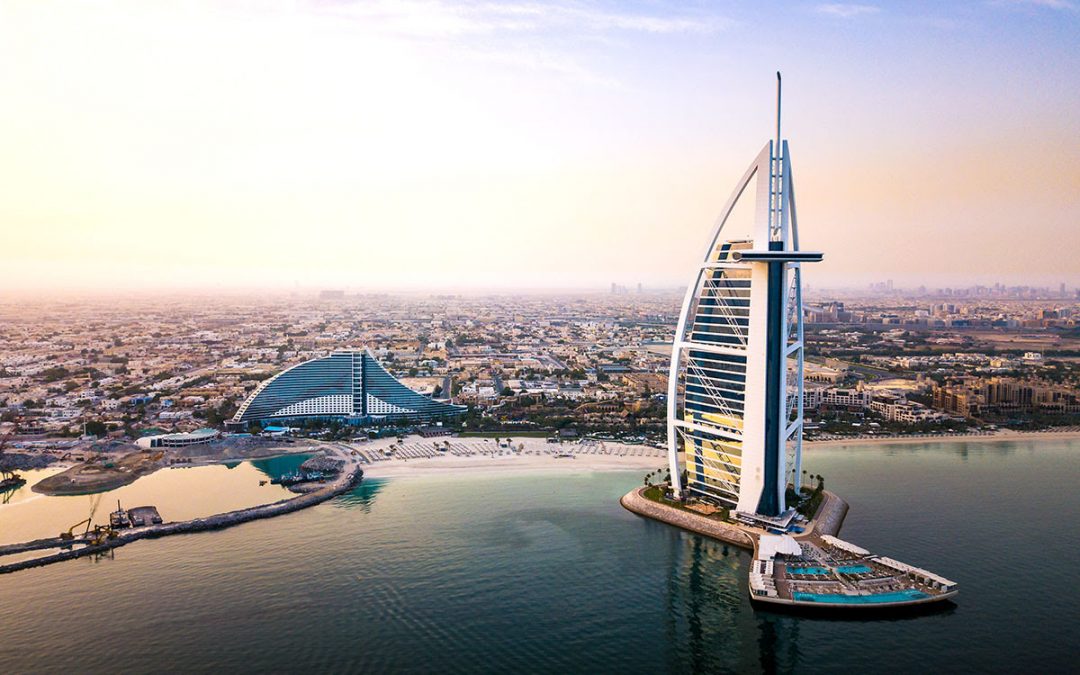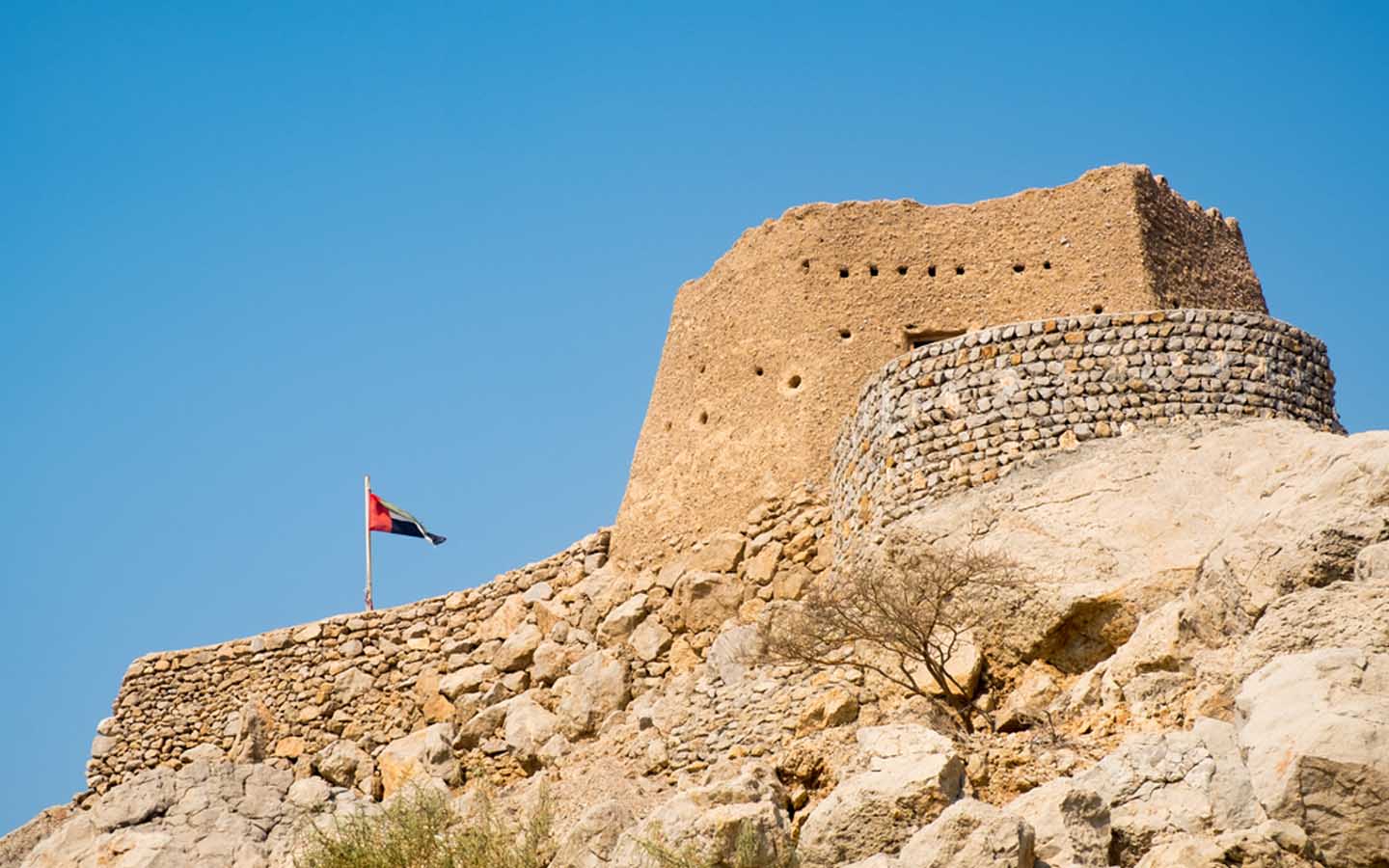Featured Image : Dubai Dubai is the capital of the Emirate of Dubai. In the 18th century, it was a...


Featured Image : Dubai Dubai is the capital of the Emirate of Dubai. In the 18th century, it was a...
Features information that is relevant to travellers who are thinking about and actively planning a visit Dubai or any part of the Arab World.

Dhayah Fort was built in the 18th-century in Ras Al Khaimah, United Arab Emirates (UAE) as a protection against British invasion and was the site of a battle during the Persian Gulf campaign of 1819, when British troops captured the fort after a brief siege. After the fall of Dhayah, a treaty known as General Maritime Treaty of 1820, was signed between the rulers of Abu Dhabi, Sharjah, Ajman, Umm Al Quwain, Ras Al Khaimah and Great Britain in January 1820, with the nearby island state of Bahrain acceding to the treaty in the following February. This treaty endured until the independence of the United Arab Emirates on 2 December 1971.

The Dhayah fort offers a stunning 360-degree view of its scenic surroundings as it is on top of a hill. It is accessed only by a zigzag staircase of more than 100 steps. Climbing the staircase is a bit of a challenge but the scenic view from the fort is well worth the effort. You also get the views of the beautiful sea, majestic Hajar Mountains, a splendid oasis and the city around it.
In the summer it can get very hot so make sure to cover up against direct sunlight and apply sunscreen and wear sunglasses and a cap to protect your face and eyes.

There is a watchtower located just outside Al Jazirah Al Hamra. This tower was constructed about 100 years ago to protect the water wells in the village of Al Jazirah Al Hamra.
The ‘Sur” fortification was constructed using mud bricks at the foot of the hill. This ‘Sur’ was used as a retreat for local people. The fort, the watchtower and the “sur’ formed the fortification of Al Jazirah Al Hamra.
If you are a first time visitor it would be better to go with a guide for navigation, as the fort is located away from the main road of Al Rams. The area is hot, so carry plenty of water to stay hydrated. If you are visiting in summer you will be exposed to lot of direct sunlight. Apply sunscreen and wear sunglasses and a cap to protect your face and eyes. The visiting hours are 09:00 am to 05:00 (Sunday to Thursday).
While you are in Ras Al Khaimah, you may also want to visit Wadi Bih in Ras Al Khaimah. Some other prominent historic places in the emirate include the haunted Al Qasimi Palace and the National Museum of Ras Al Khaimah.
The National Museum is located in one of the oldest forts in the country. The fort also served as the residence of a ruling family before it was converted into the National Museum in the 1980s. In fact, amongst the countless artifacts and historical exhibits are original treatises signed by former ruling families. The excavated artifacts show that the Ras Al Khaimah has been home to several trading civilisations since 5000 BC and has a rich history and continuous settlements for 7,000 years. From traditional weapons to fishing instruments, and ancient pottery, the museum is a great spot for anyone looking to glimpse into the emirate’s past.

Ajman is the capital of the emirate of Ajman in the United Arab Emirates. It is located along the Persian Gulf, and is surrounded by the larger emirate of Sharjah in territory.
There are about 50 international and local retail shops and banks including Emirates National Bank of Dubai, Ajman Bank, Arab Bank PLC, Bank Saderat Iran, and Commercial Bank of Dubai.
Ajman Free Zone has a capacity to accommodate 1500 companies and serves over 1,000 vessels a year, Ajman Port and Ajman Free Zone are major contributors to the emirate’s economy. Exporting to over 65 countries, the Free Zone’s companies make up approximately 20% of the UAE’s overall industrial units, with some 256 industrial companies operating from the zone.

Distance from Ajman to Dubai is 44km. Travel time by car is 40 minutes during off peak. To avail of the cheaper and larger accommodation, there are many who are working in Dubai live in Ajaman and commute daily to work. Dubai schools provide transportation to students. There are many leisure activities near residential areas.
Tourist attractions in the emirate include the Ajman Beach, Ajman National Museum situated at Ajman Fort, the Red Fort and the museum in the inland enclave of Manama. City Centre Ajman, the Emirate’s biggest mall, is a big attraction as well for its unique architectural experience and variety of shops and confectioneries.

Ajman’s corniche is a popular evening and weekend destination for families and features a number of fast food outlets, coffee shops and stalls.